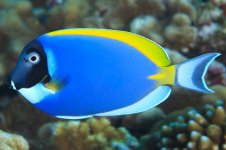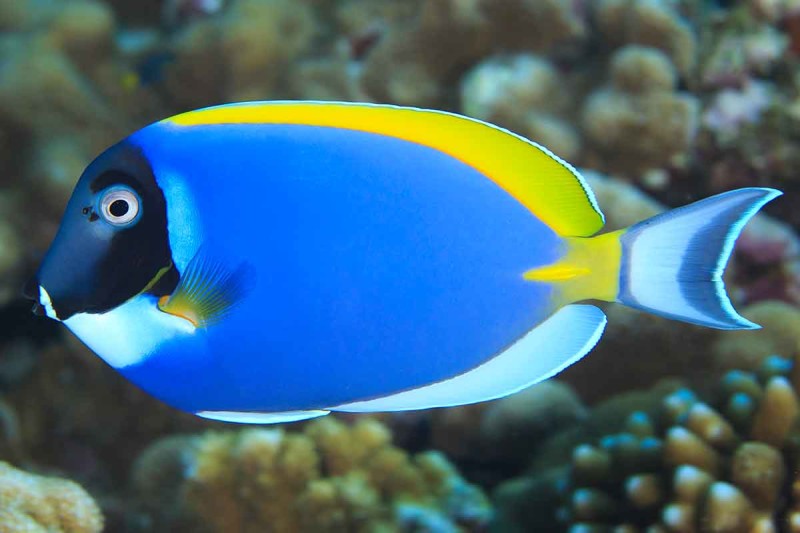
Powder Blue Tang feeding mechanism minimizes exposure to high water flow
EMY GAY5 DAYS AGO
Researchers have used high-speed video to study the feeding mechanisms of the Powder Blue Tang, Acanthurus leucosternon. Reef fish use feeding modes including high-speed suction and biting, the former method proving key to the explosive success of ray-finned fishes. But feeding via biting benthic prey (like algae on rocks,) has proved another important strategy, resulting in the co-evolution of both coral reefs and reef fish.
Coral reefs need herbivores to keep algae turfs in check, which would otherwise smother corals. But just like grass grazing mammals on the Serengeti, different fish species graze algae in different ways, using different techniques, and expending differing amounts of energy to do so. Surgeonfish are key to healthy coral reefs, yet little is known about how they feed and their mechanisms to remove the algae from the rocks.
Two species of Zebrasoma have been studied before though, where Perevolotsky, et al. discovered that they use their entire body and fins to detach prey from benthic substrates through the use of a lateral head-flick. Think about your own Zebrasoma species when grazing and that head flick is right.
But when Michalis Mihalitsis and Peter Wainwright of the Department of Evolution and Ecology, at the University of California used camera technology to slow down the grazing of Powder Blue tangs (Acanthurus,) the Zebrasoma style head flick was absent, the Powder blue using a different technique instead.
For the whole article, please go:

Powder Blue Tang feeding mechanism minimizes exposure to high water flow | Reef Builders | The Reef and Saltwater Aquarium Blog
Researchers have used high-speed video to study the feeding mechanisms of the Powder Blue Tang, Acanthurus leucosternon. Reef fish use feeding modes including high-speed suction and biting…
reefbuilders.com
